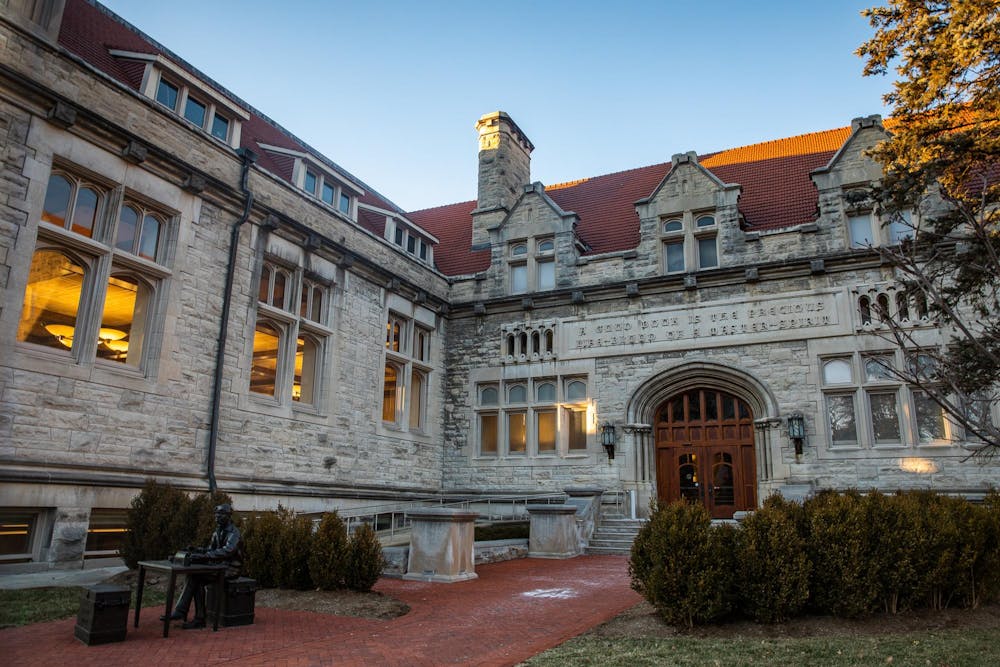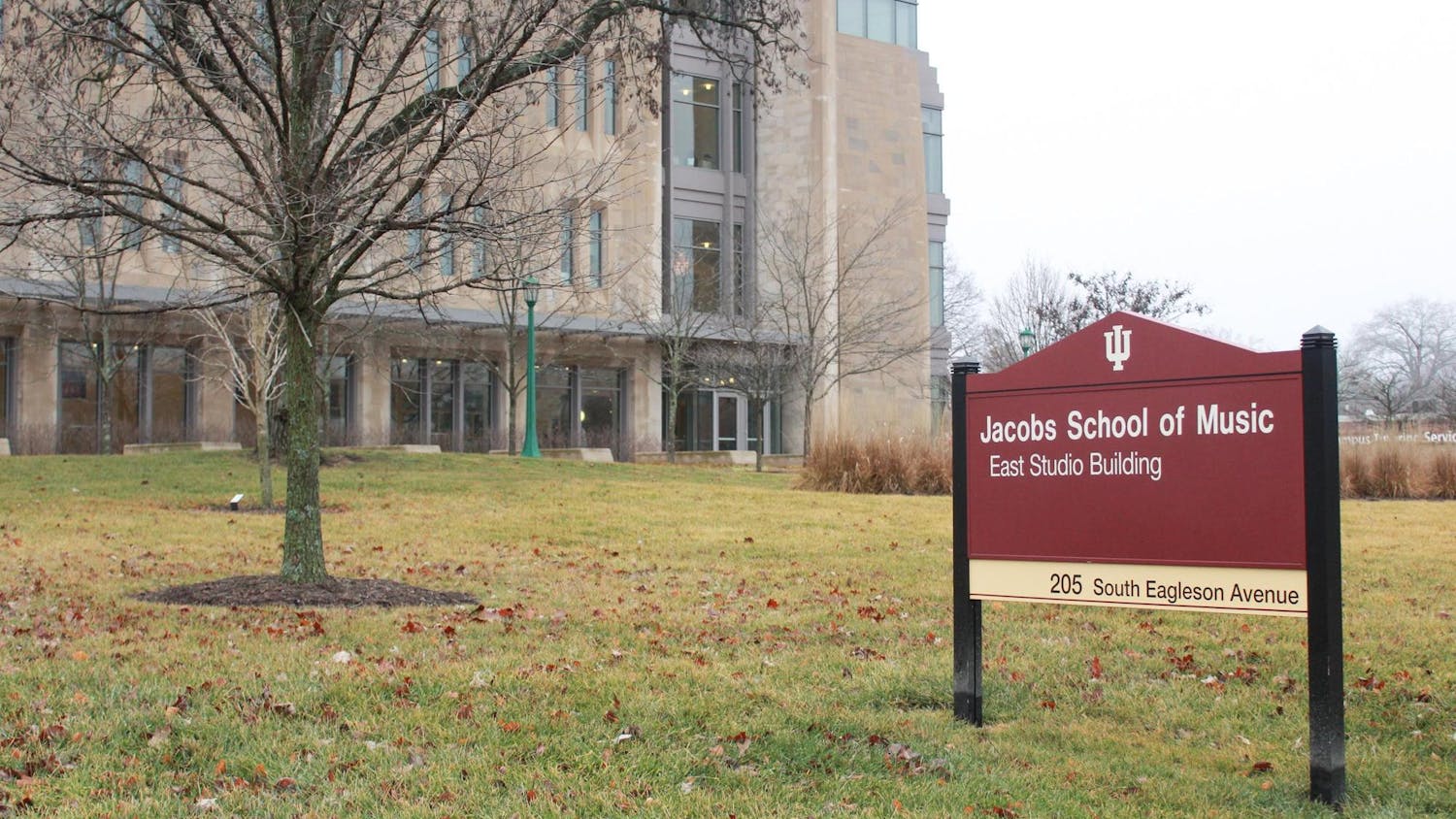An IU Media School committee seeking a financial solution for student media — including IU Student Television, WIUX and the Indiana Daily Student — sent a final report for Media School Dean David Tolchinsky on Monday morning. Final decisions, which Tolchinsky expects by the end of the semester, may require approval from the provost and the IU Board of Trustees, the dean wrote in a Feb. 19 email to faculty.
The Student Media Committee began meeting in February 2024, with the goal of ensuring the longevity of student media in light of funding issues faced by all three organizations.
One idea discussed by student media leaders and staff members is a financial student media merger, modeling institutions like the University of Texas student media umbrella. Director of Student Media Jim Rodenbush, who first brought up the idea of a merger to former Media School Dean James Shanahan in November 2018, said he sees the merger as a way to streamline operations and consolidate the onboarding process. He also said selling advertisements as a package across three platforms could be a way to help the organizations financially. Under Rodenbush’s version of the plan, the organizations would continue to operate independently of each other editorially.
Rodenbush sits on the committee, which also includes Media School Director of Development Emily Harrison, Media School Director of Undergraduate Studies Galen Clavio and professors Anne Ryder, Tom French, Jim Kelly and Suzannah Comfort. The committee additionally features student representatives including IDS co-editors-in-chief Salomé Cloteaux and Nic Napier, IUSTV Executive Director Emma Watson and WIUX President Natalie Ingalls. Alumni on the board include Griffin Gonzalez, who now reports for WRTV, Aimee Rinehart, product manager for artificial intelligence strategy at Associated Press and Charlie Scudder, a freelance journalist and professor at Southern Methodist University. The board is chaired by director of journalism Gerry Lanosga.
The bottom line
The question of how to fund student media is pertinent to all three organizations at IU.
WIUX, established when two campus radio stations merged in 1967, is a university student organization that was funded by student fees until the Committee for Fee Review decided to no longer allocate funding to the organization during the pandemic, WIUX president Natalie Ingalls said. The CFR, a group of students who distribute funds from student fees to organizations, said WIUX does not provide a “substantial benefit” to campus, Ingalls said.
Ingalls said in a statement that the past few years have been difficult for student media, describing the challenges WIUX faced after losing funding.
“There are other avenues of raising funds that we have begun to explore, such as underwriting and putting on fundraising events during Pledge Drive, but it has been difficult to create the infrastructure when previously, our only concerns were creating cool programming and putting on free music events for students and the Bloomington community,” she wrote. “I know of many students who came to IU because of WIUX, and so it’s in the best interest of the Media School in addition to students to see it thrive.”
The CFR also felt IUSTV did not provide substantial value to community beyond the Media School, deciding to forgo funding for the organization in 2017. IUSTV executive director Emma Watson said the organization almost went bankrupt until the Media School stepped in to cover engineering costs.
But Media School support is not guaranteed forever, Watson said, putting the organization in a state of limbo. IUSTV and WIUX cannot advertise or raise revenue on their own without IU approval because of their status as a university student organization. Moving to a structure where they have more freedom to raise money requires a foundation the organizations lack, like more professional staff members, Watson said.
Watson expressed frustration that the CFR determined IUSTV and WIUX don’t reach enough students beyond the Media School. She said IUSTV provides opportunities for more than just journalism — the organization has reporters and anchors, but students can also write skits, do podcasts, hone film production skills or even work in marketing and web design. IUSTV also used to have broader reach because students in residence halls could hook their televisions up to campus cable, where they could watch IUSTV broadcasts, but Watson said IU got rid of that option six or seven years ago. The change delivered a blow to the organization’s ability to establish their broadcast as a daily routine for students, like how people usually tune into other broadcast programs like MSNBC. Instead, IUSTV posts their videos on YouTube, meaning students must now seek the content out.
The IDS’ financial struggles are different because of its status as a university auxiliary, which allows the newspaper to make its own money and pay salaries and benefits for professional staff members and paychecks for students. Founded in 1867, the IDS was chartered by the IU Board of Trustees as an independent entity with editorial independence. Editorial independence allows student editors to make final decisions regarding content, free of influence from the university or advertisers.
Despite receiving advertising revenues and alumni donations, it’s not enough to stem the bleeding from a national shift in the advertising industry and audience interaction. As a result, the newspaper has a negative cash balance of $894,550 as of Feb. 29, a figure only possible because in 2021 the Media School agreed to allow the IDS to operate at a deficit for three years.
In fiscal year 2023, the IDS’ revenue was $673,304. But the IDS still operates at a loss of about $300,000 a year, Rodenbush said. Print costs and staff pay, including students and professional staff members, consume the majority of expenses; Rodenbush said people and print made up around 88% of expenses when he calculated it last fall.
But while the IDS and the Media School have reduced both professional staff positions and print frequency, the problem persists.
The IDS once had 12 professional staff members, Rodenbush said. When he started in 2018, there were eight. Today, there are five. The reduction has led Rodenbush and other staff members to take on extra responsibilities. Rodenbush has even taken to delivering the paper on Thursday mornings.
In 2017, the IDS cut the print paper from five days a week to just two. And in the fall of 2020, the printing schedule was again reduced to just once a week. Other student publications have argued print reductions harm the newspaper’s role as a physical archive of a university, reduce its ability to reach a wider audience, decrease design opportunities and shrink advertising space.
A look back in time
Ron Johnson, who worked as director of student media from 2008 to 2017, said he and other IDS leaders at the time undertook significant belt-tightening to help the newspaper’s financial issues, looking at paper delivery, printing contracts and the online content management system.
“Everything was open for review,” he said.
Students also took it upon themselves to cut costs, choosing cheaper options when traveling to cover athletic events. At the time, the cost-cutting was substantial, allowing the IDS to resist a suggestion from then-Media School Dean James Shanahan to eliminate student salaries, Johnson said.
The shift in the journalism industry has naturally caused a change in priorities in academia, Johnson said, leading universities to expand and merge multiple media-related disciplines.
Johnson recalled a quote from McRobbie that drew ire from the journalism community in 2012. Referencing the School of Journalism’s transformation to the Media School, the former IU president told the Herald-Times that “there’s no point in saving a school that trains people to manage fleets of horses if the motorcar has taken over horse-drawn transportation.”
“The theme of print journalism being antiquated ran through the administration,” Johnson said.
Though Johnson was ultimately forced to resign early, which Shanahan said was due to financial reasons, he looks back fondly on his time at the IDS.
“I just felt blessed to have been a part of it,” he said.
A look forward
In an interview with the IDS, Lanosga said the Student Media Committee isn’t just about fixing a problem — it’s also about planning for the future and creating a structure that thrives in the “dynamic media environment” of today.
Another aspect of the overall committee's effort is a subcommittee dedicated to mental health. Tolchinsky is particularly interested in supporting the mental health and safety of student journalists, Lanosga said, with the subcommittee aimed at determining university initiatives to help the effort.
While nearly everything is on the table, the question of the IDS’ editorial independence is not, Lanosga said. Lanosga said the position of the committee and the dean is that the newspaper’s independence is a given.
Though progress has been slow in recent years, the dean is committed to finding a solution, Lanosga said.
“I do think he has a sense that this is a priority and that this is not something we’ll be kicking down the years,” he said.
Watson said she hopes the committee will help spread the word about student media’s importance and the challenges it faces throughout the university community, but she’s also found personal value in learning about other student media organizations and the pride they inspire in alumni.
“You can see it on the walls of this newsroom how much history these organizations have had,” she said.
Tolchinsky reiterated his support for student media in an email to the IDS.
“Again, my goal is to see our student media remain strong and independent for years and years to come,” he wrote. “And for our student media to be the very best learning labs they can be.”
Editor’s Note: Leadership at the Indiana Daily Student, including co-editors-in-chief Salomé Cloteaux and Nic Napier, were involved in the editing of this story. For that reason, they have refrained from commenting or providing a statement in this particular story. However, their voice is captured through the other student media leaders and that of director Jim Rodenbush.
Correction: This article has been updated to reflect that the Committee for Fee Review is made up of both graduate and undergraduate students.




